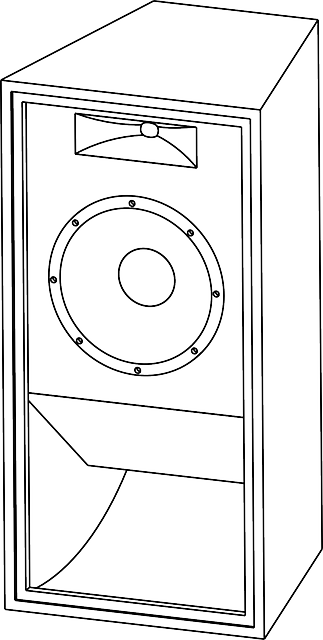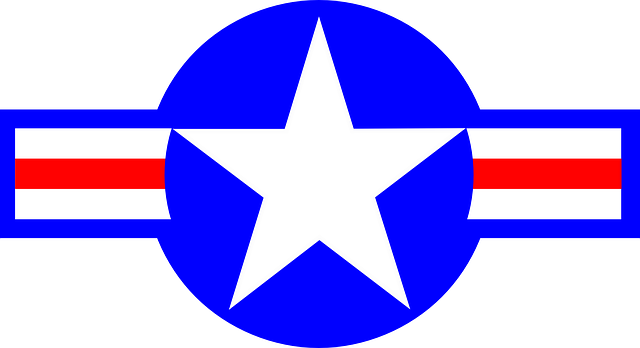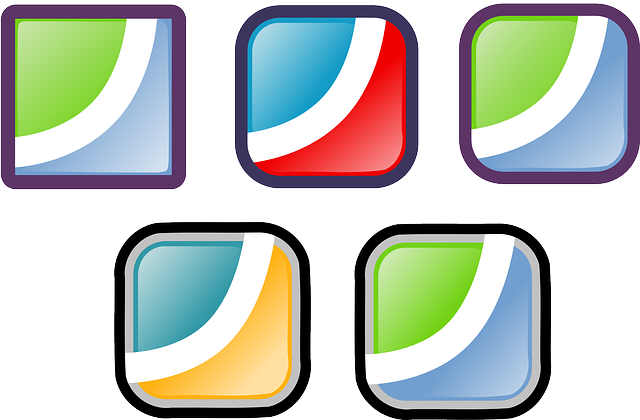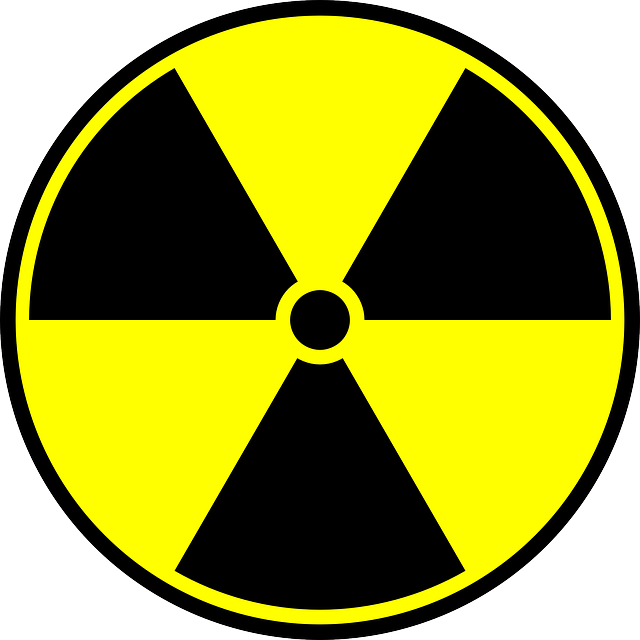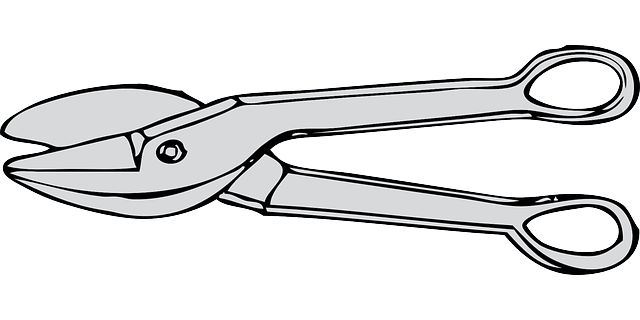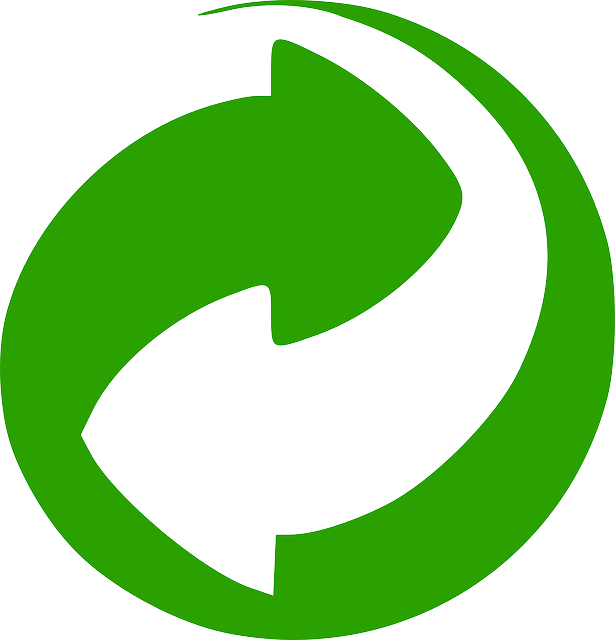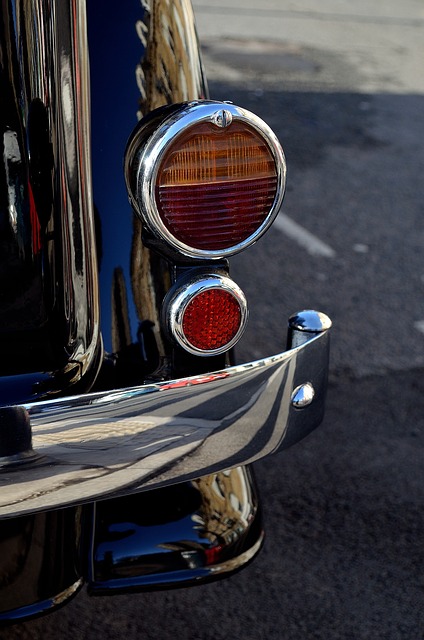التسرب النفطي هورايزون المياه العميقة
| Deepwater Horizon oil spill | |
|---|---|
|
Anchor handling tugs تكافح النيران على هورايزون المياه العميقة أثناء درس خفر السواحل الأمريكي عن المفقودين من الطاقم.
| |
| المسقط | خليج المكسيك، بالقرب من دلتا المسيسپي، لويزيانا، الولايات المتحدة |
| الاحداثيات | |
| التاريخ | Spill date: 20 April – 15 July 2010 Well officially sealed: 19 September 2010 |
| الأسباب | |
| الأسباب | Wellhead blowout |
| الخسائر | 11 فقيد، وفي عداد الموتى |
| المشغل | Transocean under contract for BP |
| خصائص التسرب | |
| الحجم | 4.9 million barrelss (210,000,000 US gallons; 780,000 متر مكعبs) ±10% |
| المساحة | 2,500 to 68,000 ميل2 (6,500 to 176,100 kم2) |
التسرب النفطي هورايزون المياه العميقة أوانفجار منصة حفر المياه العميقة 2010، هوانفجار سقط في 20 أبريل 2010 عندما انفجرت منصة حفر مياه عميقة تملكها ترانساوشن، في خليج المكسيك، على ساحل ولاية لويزيانا، ثم غرقت بعد يومين من الانفجار. وأسفر الانفجار عن مقتل 11 إنسان وجرح 17، وتسبب في تسرب نفطي وصل حاليا إلى ما يعادل 5,000 برميلs (210,000 غال-أمريكي)من النفط الخام يوميا، حسب تقديرات الحكومة الأمريكية (بالرغم من حتى تحليلات خبراء صناعة النفط لبيانات القمر الصناعي تقدر معدل التسرب بأكثر من 25,000 برميل يوميا). وهوأسوأ حادثة غرق وتسرب نفط في خليج المكسيك منذ حادثة ايوكستك ا عام 1979. ويخشى الخبراء من حتى يؤدي الحادث إلى كارثة بيئية حيث حتى انتشار بقعة النفط من الممكن حتى يهدد صناعة الصيد وموطن مئات الأنواع من الطيور على شاطئ لويزيانا، خليج المكسيك.
خلفية
The Deepwater Horizon was a fifth generation, ultra-deepwater dynamic positioned column-stabilized semi-submersible drilling rig. The rig was 396 قدم (121 م) long and 256 قدم (78 م) wide and could operate in waters up to 8,000 قدم (2,400 م) deep, to a maximum drill depth of 30,000 قدم (9,100 م). The rig had the capacity to accommodate up to 130 crew members. The Deepwater Horizon was built by Hyundai Heavy Industries in South Korea and completed in 2001. The rig was owned by Transocean Ltd and was leased by BP until September 2013. At the time of the explosion, the rig was on BP's Mississippi Canyon Block 252, referred to as the Macondo prospect, in the الولايات المتحدة sector of the Gulf of Mexico, about 41 ميلs (66 kم) off the Louisiana coast.
الانفجار وجهود الانقاذ
The fire reportedly started at 10 p.m. CST. Adrian Rose, a vice president of Transocean, Ltd., said workers had been performing their standard routines with "no indication of any problems" just prior to the explosion. According to spokesperson of Transocean Ltd, at the time of the explosion the rig was drilling but was not in production. According to officials, 126 individuals were on board, of whom 79 were Transocean employees, six were from BP, and 41 were contracted.
Survivors described the incident as a sudden explosion which gave them less than five minutes to escape as the alarm went off. Officials would later conclude that 11 workers could have been near the blast and not been able to escape due to the sudden explosion. Most of the survivors escaped via fiberglass lifeboats equipped with diesel engines and traveled nearly 45 minutes before reaching a supply boat that BP had hired to pick up the survivors. The survivors were brought to Port Fourchon to go through a medical check-up and be reunited with their families.
115 of the 126-member crew were recovered; 94 were taken to shore with no major injuries, four others were transported to another vessel, 17 were evacuated from the rig by helicopter and taken for medical treatment, two were airlifted to a trauma center in Mobile, Alabama,ستة were taken to University of South Alabama Medical Center with one admitted to the burn unit and the other five released, أربعة were taken to the West Jefferson Medical Center in Marrero (two by air and two by ground), all of whom were treated and released by 11:15 a.m. on April 21. اعتبارا من 23 أبريل 2010[تحديث], Rear Admiral Mary E. Landry, commander of the Eighth Coast Guard District said that the conditions of four of the injured had improved with two of them released from the hospital, one soon to be and another expected to be released in seven to ten days.
Initial reports indicated between 12 to 15 were missing. The United States Coast Guard launched a massive rescue operation. Four helicopters, four coast guard ships and one plane were used for rescue operations. Two Coast Guard cutters continued searching overnight. By the morning of April 22 the Coast Guard had surveyed nearly 1,940 ميلs (3,120 kم) in 17 separate air and sea search missions.
After having been on fire for more than a day, Deepwater Horizon sank on April 22, 2010. On April 23, the Coast Guard called off the search for the 11 missing persons because "reasonable expectations of survival" had passed.
التحريات
The Coast Guard and the Minerals Management Service launched an investigation on possible causes of the explosion. Production casing was being run and cemented at the time of the accident. Once the cementing was complete, it was due to be tested for integrity and a cement plug set to abandon the well for later completion as a subsea producer. According to Transocean executive Adrian Rose, "undoubtedly abnormal pressure" had accumulated inside the marine riser and as it came up it "expanded rapidly and ignited", an event known as a blowout. The United States House of Representatives Energy and Commerce Committee has asked Halliburton for a briefing onخمسة May and byسبعة May for any documents it might have related to its work on the Macondo well. Halliburton has confirmed that it cemented the Macondo well but never set a cement plug to cap the bore as "operations had not reached a stage where a final plug was needed". Halliburton said that it had finished cementing 20 hours before the fire.
At an April 30 press conference, BP said that it did not know the cause of the explosion.
The Mineral Management Service officials said there have been 39 fires or explosions offshore in the Gulf of Mexico in the first five months of 2009, the last period with statistics available.
تسرب النفط
ما قبل تسرب النفط
In February 2009, BP filed a 52-page exploration and environmental impact plan with the federal Minerals Management Service for the Deepwater Horizon well. The plan stated that it was "unlikely that an accidental surface or subsurface oil spill would occur from the proposed activities", and that "due to the distance to shore (48 miles) and the response capabilities that would be implemented, no significant adverse impacts are expected".
اكتشاف تسرب النفط
On the morning of April 22 2010, CNN quoted Coast Guard Petty Officer Ashley Butler as saying that "oil was leaking from the rig at the rate of about 8,000 barrels of crude per day." That afternoon, as a large oil slick spread, Senior Chief Petty Officer Michael O'Berry told CNN that a submersible crew had been unable to cap the well and that, based on the rig's previous daily production, up to 336,000 غالون أمريكيs (1,270,000 لترs) of oil a day could spill into the Gulf. Butler warned of a leak of up to 700,000 غالون أمريكيs (2,600,000 لترs) of diesel fuel, and BP Vice President David Rainey termed the incident as being a potential "major spill."
BP on April 22 announced that it was deploying an unmanned submarine (or ROV) to the site to assess whether oil was flowing from the well. Other reports indicated that BP was using more than one ROV and that the purpose was to attempt to plug the well pipe.
The next day, April 23, a Reuters article titled "Oil spill not growing" referred to an unnamed "spokeswoman" and an ROV that "found no oil leaking from the sunken ... rig and no oil flowing from the well." Coast Guard Rear Adm. Mary Landry, interviewed by CBS, when specifically asked how much oil was emanating from the ocean floor wellhead or the broken pipes or risers, stated that no oil was emanating from either. On another TV interview the same day, Landry stated, "The fact that there is no oil spilled other than that small amount we were able to work with, that's a good thing," and expressed "cautious optimism" of zero environmental impact. Subsequently, news stories of April 23 quoted Admiral Landry as saying that no oil appeared to be leaking from either the undersea wellhead or at the water's surface, and that oil spilled from the explosion and sinking was being contained.
The following day, April 24, Landry announced that a damaged wellhead was indeed leaking oil into the Gulf. Landry described it as "a very serious spill, absolutely."
حكم واتساع تسرب النفط
BP originally estimated up to 1,000 barrels of oil a day (1.84 litres/second) were leaking from the wellhead, but by April 28, the NOAA said that the rate was probably five times that estimate, i.e., 5,000 barrels, or about 210,000 U.S. gallons (790,000 liters), per day (9.2 litres/second). Other sources using satellite imagery have put that number as high as 5,000 to 10,000 barrels a day (9.2 to 18.4 litres/second). According to BP, estimating the flow is very difficult, as there is no metering of the flow underwater.
The spread of the oil was increased by strong southernly winds caused by an impending cold front. By April 25, the oil spill covered 1,500 square km, and was only 50 km from the Chandeleur Islands, ecologically sensitive barrier islands, damaged in 2005 by Hurricane Katrina. An April 30 estimate placed the total spread of the oil at 3,850 square miles. The spill quickly approached the Delta National Wildlife Refuge and Breton National Wildlife Refuge.
Mike Miller of Safety Boss, a fire-fighting company that specializes in oil wells, suggested that the oil spill may become the biggest in history. The oil slick may eventually exceed the volume of oil in the 1989 Exxon Valdez oil spill. At the rate of 5,000 barrels per day, it will take less than two months for the current spill to surpass the 270,000 barrels oil spilled by the Exxon Valdez.
جهود لوقف تسرب النفط
BP planned to use ROVs to close the blow out preventer (BOP) valves on the well head 5,000 feet below the surface of the water. The valve closing procedure was estimated to take 24 to 36 hours as of April 25. As of April 28, BP had been unsuccessful in accomplishing this. BP engineers are working on two other options to secure the source. The first and fastest is to place a dome over the well head that will capture the oil and pipe it to the surface to be contained in a storage vessel, but it will still take weeks for the design and fabrication of the dome before it can be put in place. BP is also preparing to drill a relief well into the original well to relieve it. Transocean Development Driller III has arrived on site and is preparing to drill and is scheduled to start a relief well by the weekend. Transocean's Discoverer Enterprise is also underway should a second relief well be necessary. This operation will take two to three months to stop the flow of oil and will cost about $100 million. Re-drilling the well straight down was done in Australia after the Montara oil spill. In this case, once the second drilling operation reached the original borehole the operators pumped drilling mud into the well to stop the flow of oil.
التعامل مع التسرب
BP, which was leading the cleanup, employed remotely operated vehicles (ROVs), 700 workers, four airplanes and 32 vessels to contain the oil. After the discovery that the undersea wellhead was leaking, the oil cleanup was being hampered by high waves on April 24 and 25. According to BP Plc's Chief Executive, Tony Hayward, BP will compensate all those affected by the oil spill saying that "We are taking full responsibility for the spill and we will clean it up and where people can present legitimate claims for damages we will honour them. We are going to be very, very aggressive in all of that."
On April 28, it was announced that the US military was joining the cleanup operation and Doug Suttles, chief executive officer of BP, welcomed the assistance of the US military. Also it was announced that the US Coast Guard would commence burning of the oil. They initiated a "controlled burn" later that day 30 miles east from the Mississippi river delta in an effort to protect environmentally sensitive wetlands.President Barack Obama announced that the Federal Government was using "every single resource at our disposal" to control the slick.
By April 29, 69 vessels including skimmers, tugs, barges and recovery vessels were active in cleanup activities. In an attempt to minimize impact to sensitive areas in the Mississippi River Delta area, over 100,000 feet of booms were deployed along the coast. By the next day, this nearly doubled to 180,000 feet (34 miles) of boom in the water, with an additional 300,000 feet staged or being deployed.
At the time of the spill, President Barack Obama declared the coastline of Louisiana and Mississippi an emergency and sent more than 1,000 National Guard personnel to assist in the cleanup operation.
On 30 April, it was estimated approximately 2,000 people, 79 vessels, and two DoD C-130 aircraft involved in the response. All told, 217,000 feet of boom were assigned and 139,400 غالون أمريكيs (528,000 لترs)+ of dispersant deployed. BP claims that more than 853,000 غالون أمريكيs (3,230,000 لترs) of oil-water mix have been recovered.
On May 1st, the White House announced that President Obama would visit the region on Sunday, May 2nd.
النتائج
تهديد شاطئ الخليج
On April 29, Governor of Louisiana Bobby Jindal declared a state of emergency in the state after weather forecasts predicted the slick would reach the Louisiana coast by April 30. More than 400 species, including whales and dolphins, face a dire threat from the spill, along with Louisiana's barrier islands and marshlands. In the national refuges most at risk, about 34,000 birds have been counted, including gulls, pelicans, roseate spoonbills, egrets, shore birds, terns and blue herons. By 30 April, the Coast Guard received reports that oil had begun washing up to wildlife refuges and seafood grounds on the Louisiana Gulf coast and initial cost estimates to the fishing industry were $2.5 billion while the impact on tourism along Florida's Paradise coast could be $3 billion. Because of the risk that the oil spill can affect the shrimping industry, an emergency shrimping season was opened on April 29, 2010 so that a catch could be brought in before the oil advanced too far.
دعوى
On April 22, the families of two missing workers filed lawsuits in federal and state court in Louisiana against BP and Transocean, alleging negligence and failure to meet federal regulations.
As of April 30, at least four lawsuits had been filed and insurers were bracing for years of claims. One report put the number of lawsuits at "more than two dozen." Another article counted three dozen, including 31 attempts to file class action lawsuits.
One class action was filed on April 28, 2010, by two commercial shrimpers from Louisiana, against Transocean, BP, Halliburton Energy Services Inc., and Cameron International Corp., stating that the oil spill disrupts the commercial shrimping industry. The lawsuit seeks $5 million dollars in compensatory damages and an unspecified amount in punitive damages.
دعوى منصف الحفر
Secretary of the Interior Ken Salazar has ordered immediate inspections of all deep-water operations in Gulf of Mexico. An Outer Continental Shelf safety review board within the Department of the Interior will provide recommendations for conducting drilling activities in the Gulf. According to President Obama no new offshore drilling leases will be issued until a thorough review determines whether more safety systems are needed.
وبعد عشر سنوات
وجد تحقيق لوكالة أسوشييتد برس حتى الشركات تحفر أعمق وأعمق في خليج المكسيك حيث تعمل إدارة ترامب على تخفيف قواعد السلامة ، مما يثير مخاوف من المزيد من الانفجارات وحوادث أخرى.
يقول قادة الصناعة والمسؤولون الحكوميون إنهم مصممون على منع تكرار كارثة ديب واتر هورايزون. التي أدى إلى تسرب 134 مليون جالون من النفط الذي أفسد الشواطئ من لويزيانا إلى فلوريدا ، وقتل مئات الآلاف من الحيوانات البحرية ودمر الاقتصاد السياحي في المنطقة. ورغم ذلك الحقيقة تثبت العكس تماما لهذه الرواية
تعتمد الشركات اليوم بشكل متزايد على الإنتاج من احتياطيات النفط الأعمق والأكثر خطورة بطبيعتها ، حيث تتعامل أطقم الحفر مع ضغوط مرتفعة للغاية ودرجة حرارة النفط قد تصل 177 درجة مئوية.
معرض الصور
Response boats work to clean up spilled fuel and oil from the rig and undersea wellhead.
In this image, the Mississippi River Delta is at image center, and the oil slick is a silvery swirl to the right.
The slick seen from NASA's EO-1 satellite.
The slick just off the Louisiana coast.
انظر أيضا
- قائمة تسربات النفط
- Offshore oil and gas in the US Gulf of Mexico
- United States offshore drilling debate
- Ixtoc I exploratory oil well in the Gulf of Mexico. Suffered a similar blowout and is recognized as the second largest oil spill in history.
- Murphy Oil Spill (Chalmette, Louisiana) – oil spill during Hurricane Katrina.
المصادر
-
^ خطأ استشهاد: وسم
<ref>غير سليم؛ لا نص تم توفيره للمراجع المسماةAutoBB-1 -
^ خطأ استشهاد: وسم
<ref>غير سليم؛ لا نص تم توفيره للمراجع المسماةMHL -
^ خطأ استشهاد: وسم
<ref>غير سليم؛ لا نص تم توفيره للمراجع المسماةreport2011 -
^ خطأ استشهاد: وسم
<ref>غير سليم؛ لا نص تم توفيره للمراجع المسماةarea of spill - ^ Taley, Ian (2010-04-30). "Oil May Be Leaking at Rate of 25,000 Barrels a Day in Gulf". The Wall Street Journal.
- ^ Magazine 4/30/2010
- ^ (CBS News). CBS. 2010-04-30. Retrieved 2010-05-01.
-
^ "Oil Rig Sinks in the Gulf of Mexico". The New York Times. April 22, 2010. Retrieved 22 April 2010. Unknown parameter
|coauthors=ignored (|author=suggested) (help); Italic or bold markup not allowed in:|publisher=(help) - ^ "Transocean Deepwater Horizon specifications". Transocean. Retrieved 2010-04-22.
- ^ "Search for Missing Workers After La. Oil Rig Blast". Fox News. 2010-04-21. Retrieved 2010-04-21.
- ^ Tom Fowler (2010-04-21). "Workers missing after Transocean offshore rig accident". Houston Chronicle. Retrieved 2010-04-21.
- ^ "BP confirms that Transocean Ltd issued the following statement today" (Press release). BP. April 21, 2010. Retrieved April 21, 2010.
- ^ "Deepwater Horizon Still on Fire in GOM". Rigzone. 2010-04-21. Retrieved 2010-04-21.
- ^ "At least 11 missing after blast on oil rig in Gulf". CNN. 2010-04-21. Retrieved 2010-04-21.
- ^ "At least 11 workers missing after La. oil rig explosion". USA Today. 2010-04-21. Retrieved 2010-04-21.
- ^ "Oil rig survivors back on land; 11 missing". Shreveport Times. 2010-04-22. Retrieved 2010-04-22.
- ^ Wise, Lindsay; Latson, Jennifer; Patel, Purva (2010-04-22). ". Houston Chronicle. Retrieved 2010-04-22.
- ^ Kevin McGill (2010-04-22). "11 missing in oil rig blast may not have escaped". Associated Press. Retrieved 2010-04-22.
- ^ Chris Kirkham (2010-04-22). "Rescued oil rig explosion workers arrive to meet families at Kenner hotel". New Orleans Metro Real-Time News. Retrieved 2010-04-22.
- ^ Kaufman, Leslie (April 23, 2010). "Search Ends for Missing Oil Rig Workers". Retrieved April 24, 2010.
- ^ Robertson, Campbell; Robbins, Liz (2010-04-21). "Workers Missing After Oil Rig Blast". The New York Times. Retrieved 2010-04-21.
- ^ "Transocean Ltd. Reports Fire on Semisubmersible Drilling Rig Deepwater Horizon" (Press release). Transocean. April 21, 2010. Retrieved April 21, 2010.
- ^ "Oil rig blaze off Louisiana leaves at least 11 missing". BBC News. 2010-04-21. Retrieved 2010-04-21.
- ^ Jessica Resnick-Ault; Katarzyna Klimasinska (2010-04-22). "Transocean Oil-Drilling Rig Sinks in Gulf of Mexico". Bloomberg. Retrieved 2010-04-22.
- ^ "Coast guard calls off search for oil rig workers". CBC. 2010-04-23. Retrieved 2010-04-23.
- ^ Noah Brenner, Anthony Guegel, Tan Hwee Hwee, Anthea Pitt (2010-04-22). "Coast Guard confirms Horizon sinks". Upstream Online. Retrieved 2010-04-22.CS1 maint: multiple names: authors list (link)
- ^ Noah Brenner, Anthony Guegel, Anthea Pitt, Jonathan Davis (2010-04-30). "Congress calls Halliburton on Macondo". Upstream Online. Retrieved 2010-05-01.CS1 maint: multiple names: authors list (link)
- ^ Jordans, Frank (2010-04-30). "Rig had history of spills, fires before big 1". Associated Press. Retrieved 2010-05-01. Unknown parameter
|coauthors=ignored (|author=suggested) (help) - ^ "100430-G-3080T-001-DHS News Conferencemov". Visual Information Gallery. United States Coast Guard. 2010-05-01. Retrieved 2010-05-01.
-
^ Burdeau, Cain (2010-04-30). "Document: BP didn't plan for major oil spill". Associated Press. Retrieved 2010-04-30. Unknown parameter
|coauthors=ignored (|author=suggested) (help) - ^ "Coast Guard: Oil rig that exploded has sunk". CNN. 2010-04-22. Retrieved 2010-04-30.
-
^ CNN. 2010-04-22 http://www.cnn.com/2010/US/04/22/oil.rig.explosion/index.html?hpt=T1. Retrieved 2010-04-30. Missing pipe in:
|first=(help);|first=missing|last=(help); Missing or empty|title=(help) -
^ Nichols, Bruce (2010-04-22). "Rig sinks in Gulf of Mexico, oil spill risk looms". Reuters. Retrieved 2010-04-30. Unknown parameter
|coauthors=ignored (|author=suggested) (help) - ^ Jonsson, Patrik (2010-04-22). "Ecological risk grows as Deepwater Horizon oil rig sinks in Gulf". Christian Science Monitor. Retrieved 2010-04-30.
- ^ Nichols, Bruce (2010-04-23). "Oil spill not growing, search for 11 continues". Reuters. Retrieved 2010-04-30.
- ^ . CBS News. CBS. 2010-04-23. Retrieved 2010-04-30.
- ^ . Clip Syndicate. WDSU NBC. 2010-04-23. Retrieved 2010-04-30.
- ^ Jervis, Rick (2010-04-23). "Coast Guard: No oil leaking from sunken rig". USA Today. Retrieved 2010-04-30.
-
^ McGill, Kevin (2010-04-23). "Oil drilling accidents prompting new safety rules". Houston Chronicle. Retrieved 2010-04-30. Unknown parameter
|coauthors=ignored (|author=suggested) (help) - ^ "Oil rig wreck leaks into Gulf of Mexico". CBC News. Associated Press. 2010-04-25. Retrieved 2010-04-25.
- ^ "untitled". AP. Associated Press. 2010-04-28. Retrieved 2010-04-30.
- ^ "US military joins Gulf of Mexico oil spill effort". BBC News. BBC. April 29, 2010. Retrieved April 29, 2010.
- ^ Staff writer (2010-04-25). "Robot subs trying to stop Gulf oil leak". CBC News. Retrieved 2010-04-25.
- ^ "Gulf Oil Spill, by the Numbers". CBS News. 2010-04-30. Retrieved 2010-04-30.
-
^ McGreal, Chris (April 29, 2010). "Deepwater Horizon oil slick to hit US coast within hours". The Guardian. Guardian News and Media Limited. Retrieved 30 April 2010. Unknown parameter
|coauthors=ignored (|author=suggested) (help) - ^ Associated Press, MSNBC (April 30, 2010). "Oil from massive Gulf spill reaching La. coast". Mouth of the Mississippi River, Louisiana: msnbc.com. Associated Press. Retrieved 30 April 2010.
- ^ Largest U.S. Tanker Spill Spews 270000 Barrels Of Oil Off Alaska, www.nytimes.com/learning/general/onthisday/big/0324.html
- ^ "Growing concerns over Gulf of Mexico oil leak". BBC News. BBC. April 28, 2010. Retrieved 29 April 2010.
- ^ "BP Steps Up Shoreline Protection Plans on US Gulf Coas" (Press release). BP. 2010-04-30. Retrieved 2010-04-30.
- ^ Staff writer (2010-04-29). "BP Press Release: BP MC252 Gulf Of Mexico Response Continues To Escalate On And Below Surface". BP. Retrieved 2010-04-29.
- ^ PTTEP Australasia (November 3, 2009). "PTTEP Australasia Timor Sea Operations – Incident Information #87". Press release. Archived from the original on November 5, 2009. http://www.webcitation.org/5l3MMzCW3. Retrieved November 5, 2009.
- ^ "West Atlas oil leak stopped". ABC News. November 3, 2009. Archived from the original on November 5, 2009. http://www.webcitation.org/5l3R9hPbY. Retrieved November 5, 2009.
- ^ Tom Bergin (2010-04-30). "BP CEO says will pay oil spill claims". Reuters. Retrieved 2010-04-30.
- ^ "Oil 'reaches' US Gulf Coast from spill". BBC News. BBC. April 30, 2010. Retrieved April 30, 2010.
- ^ Dittrick, Paula (2010-04-30). "Federal officials visit oil spill area, talk with BP". Oil and Gas Journal. Retrieved 2010-05-01.
- ^ "State of emergency declared as oil spill nears Louisiana". Cable News Networks. April 29, 2010. Retrieved April 29, 2010.
- ^ Bryan Walsh. (2010-05-01). Gulf of Mexico Oil Spill: No End in Sight for Eco-Disaster. Time. Retrieved 2010-05-01.
- ^ "Deepwater Horizon Oil Drilling Rig Explosion Lawsuits Filed by Two Families". aboutlawsuits.com. 2010-04-23. Retrieved 2010-05-01.
-
^ Driver, Anna (2010-04-30). "US Gulf oil spill set to trigger lawsuit flood". Reuters. Retrieved 2010-05-01. Unknown parameter
|coauthors=ignored (|author=suggested) (help) -
^ Calkins, Laurel Brubaker (2010-04-30). "BP, Transocean Suits Surge as Gulf Oil Spill Spreads (Update2)". Bloomberg Businessweek. Bloomberg. Retrieved 2010-05-01. Unknown parameter
|coauthors=ignored (|author=suggested) (help) - ^ Cain Burdeau; Holbrook Mohr (2010-04-29). "Gulf Coast oil spill could eclipse Exxon Valdez". Associated Press. Retrieved 2010-05-01.
- ^ Nicholas Johnston; Hans Nichols (2010-05-01). "Obama Orders Review, Says New Oil Leases Must Have Safeguards". Bloomberg. Retrieved 2010-05-01.
- ^ KEVIN McGILL and MATTHEW BROWN (2020-04-18). "عشر سنوات من التسريب النفطي الضخم في خليج المكسيك". أسوشييتد پرس.
وصلات خارجية
| مشاع الفهم فيه ميديا متعلقة بموضوع Deepwater Horizon drilling rig explosion. |
- U.S. Government/BP/Transocean unified command site on the "Gulf of Mexico-Transocean Drilling Incident"
- EPA website on BP Spill in the Gulf of Mexico
- Deepwater Horizon Response page on Facebook
- NOAA Deepwater Horizon Incident website (Note: site response time is very slow due to high demand)
- CNN iReport. Upclose video of the fire
- Deepwater Horizon details at Transocean's website
- GOES-13 satellite images (CIMSS Satellite Blog)
- Realtime Pictures
- Spewing 5,000 Barrels of Oil a Day, BP Spill Hits Louisiana Coastline- video report by Democracy Now!
- Mississippi's first class-action lawsuit filed over oil spill - Oil Spill - SunHerald.com (30 April 2010)
Coordinates:


